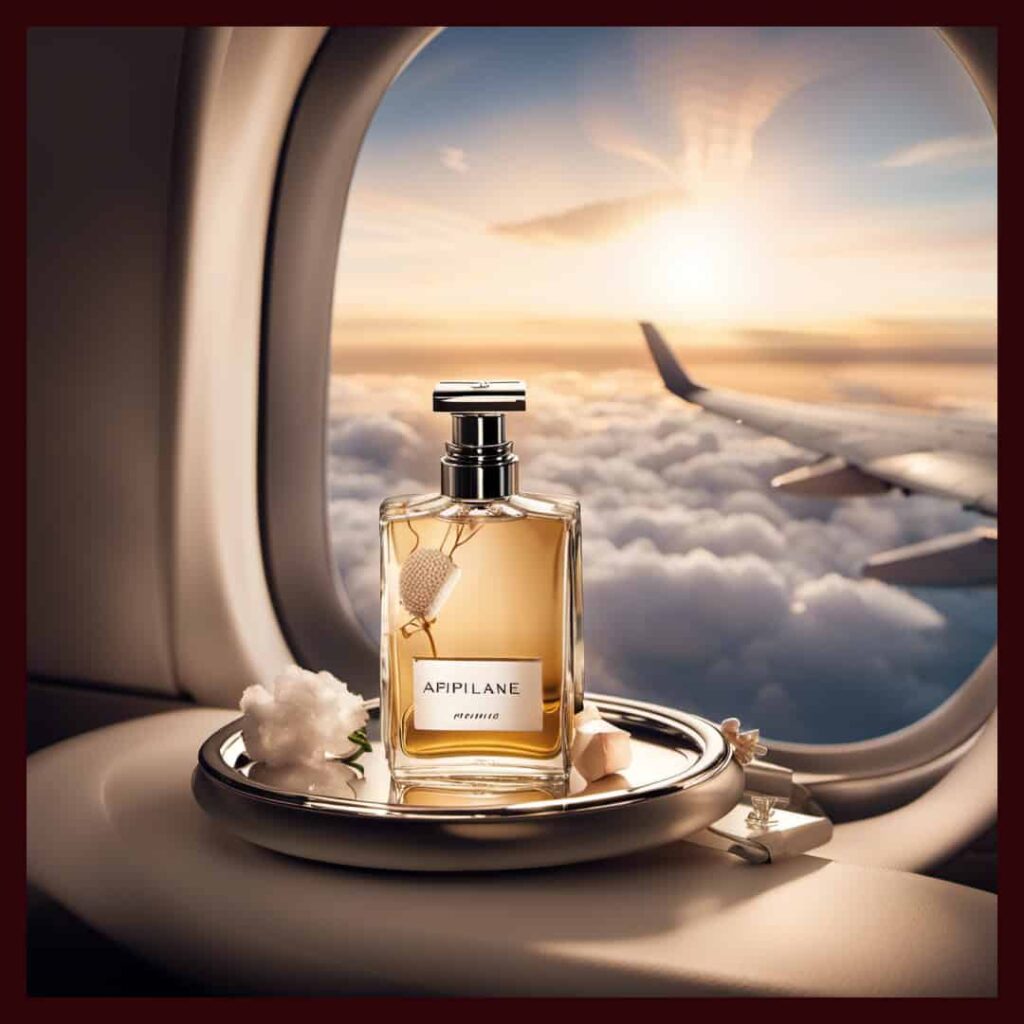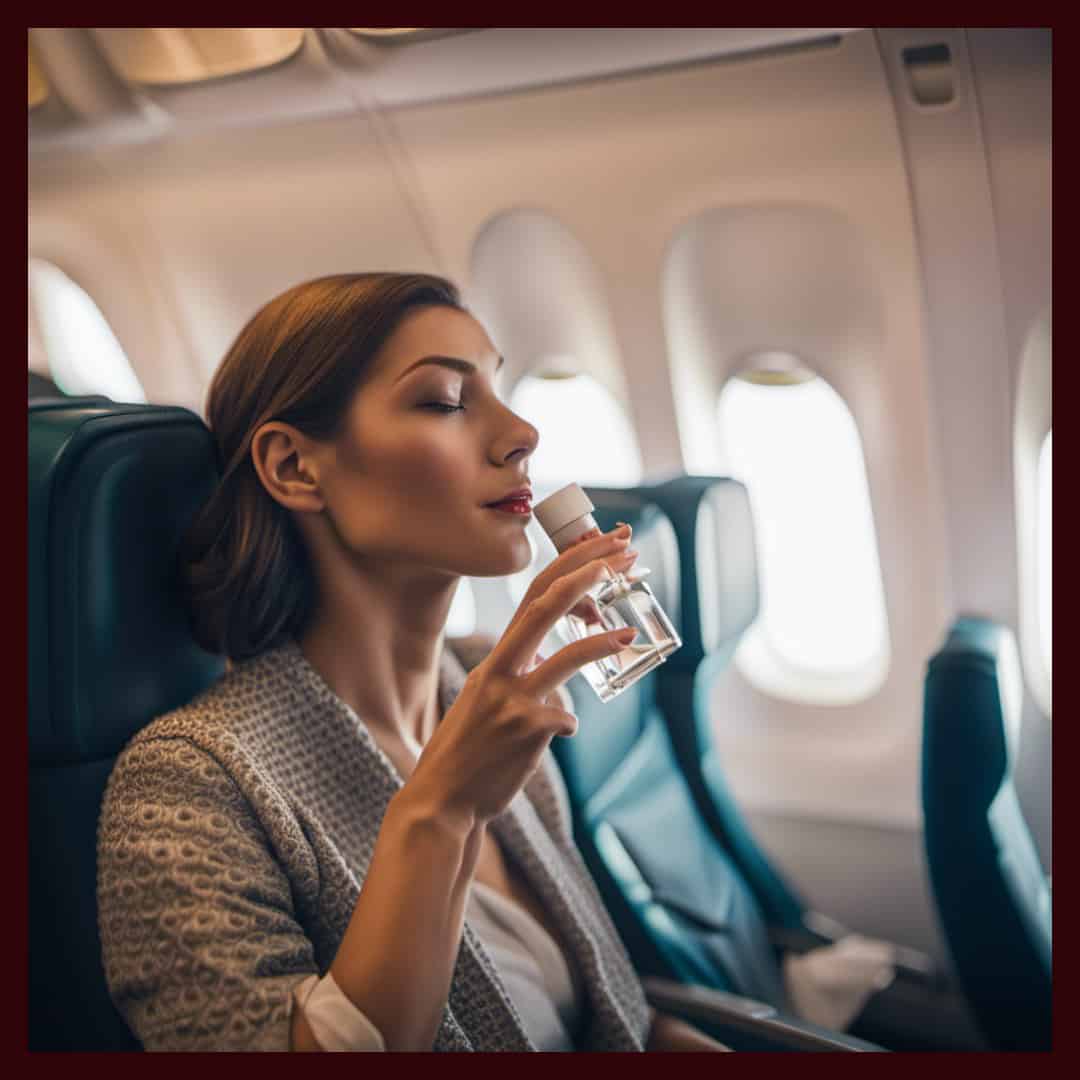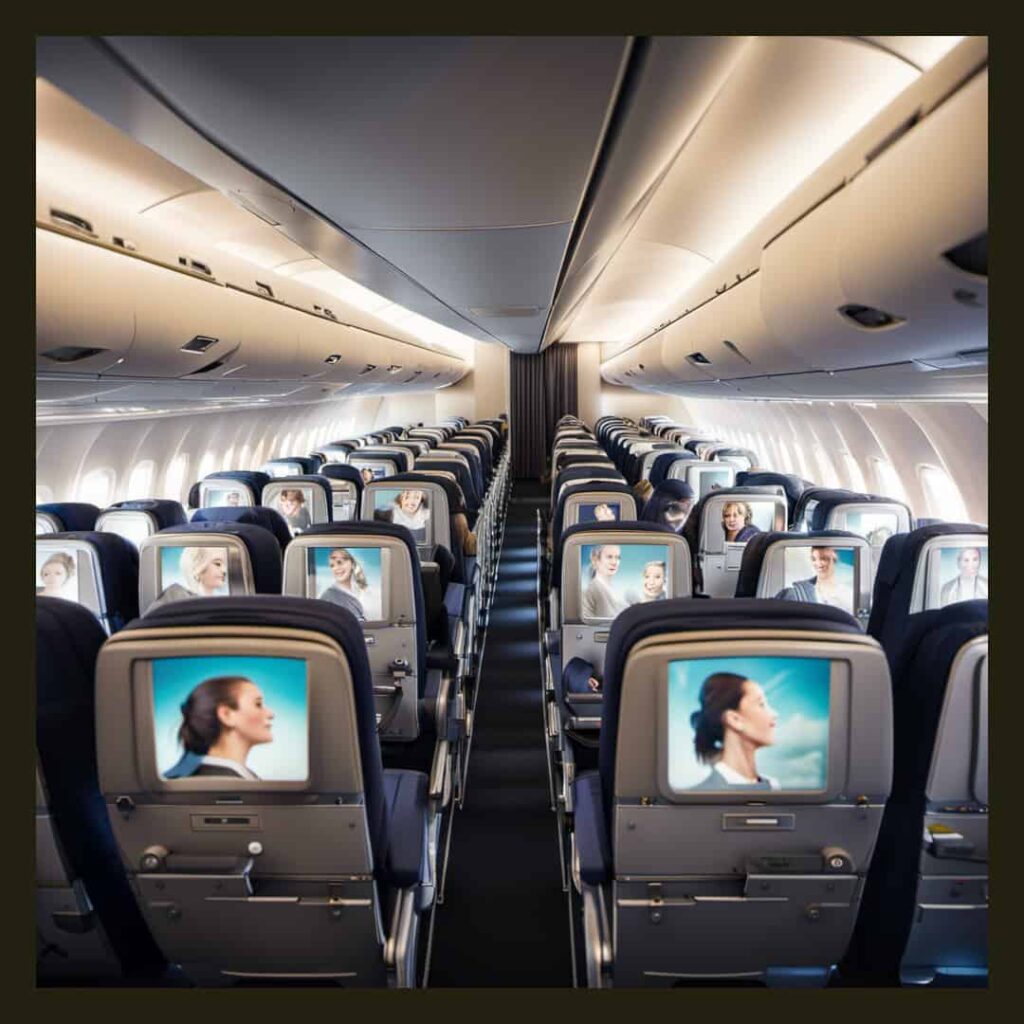While boarding a plane, many travelers are concerned about the safety of packing their favorite perfume in their luggage.
The threat of an exploding bottle of perfume due to changes in air pressure or potential flammability issues is a concern that warrants legitimate attention. Understanding the guidelines and precautions for carrying perfume on a plane can help passengers alleviate their fears and travel with confidence.
Air travel regulations often impose strict limits on the types and quantities of liquids permitted in carry-on and checked bags.
Perfume can be placed in checked luggage safely without the risk of it exploding, but it’s essential to pack it securely to avoid any leaks or damages.
Perfume, which typically contains alcohol, falls under these restrictions, and passengers must adhere to specific rules for packing and transporting their fragrances.
Furthermore, considering the air temperature and pressure fluctuations during a flight could be essential for ensuring that perfumes remain undamaged and don’t pose a safety risk.
Key Takeaways
- Complying with air travel regulations can help passengers safely transport perfumes
- Proper packing and leak prevention techniques are essential to avoid potential hazards
- Considering alternative options, like duty-free purchases, can offer additional peace of mind while traveling

Carrying Perfume on a Plane
Flying with perfume can be a concern for travelers. Rest assured, you can bring perfume or cologne on a plane, but certain rules must be followed.
For carry-on luggage, perfumes must adhere to the TSA’s 3-1-1 rule. This means that perfumes must be in containers of 3.4 ounces (100ml) or less. Additionally, they must be placed in a clear, quart-sized zip-top bag, within your carry-on or personal item.
Remember to pack perfume carefully in your hand luggage. Store it in a spot that’s easily accessible, as you will need to remove it during security screenings. The rules for carrying perfume during international travel can vary, so be aware of any specific airline or destination country regulations.
If you’re checking a bag, you may also pack perfumes or colognes in there. The FAA imposes limitations on restricted medicinal and toiletry articles, including aerosols. Abide by these guidelines when checking your luggage.
Keep in mind that various perfumes, such as parfum or eau de toilette, might have different alcohol concentrations. These substances might be subject to additional regulations. Make sure to confirm any restrictions when planning your vacation.
Lastly, when it comes to carrying lotion on a plane, the same rules as perfumes often apply. Ensure that you follow the TSA’s 3-1-1 rule for any liquid toiletries in your carry-on luggage.

Perfume Types and Restrictions
Perfume and cologne are popular fragrance products often brought on flights. They come in various forms, from liquid to solid, and can be found in products like deodorants and lotions. Despite their prevalence, there are restrictions when carrying them on planes.
The TSA, responsible for airport security in the United States, enforces a 3-1-1 rule for carrying liquids, aerosols, gels, creams, and pastes in carry-on luggage. The rule states that each container must hold no more than 3.4 ounces (100 milliliters) and fit inside a quart-sized bag. Liquid perfume and cologne must adhere to this rule.
Regarding checked baggage, travelers can place larger containers of perfume or cologne in this luggage type. It is essential to pack fragrance products securely to prevent damage or leakage. For expensive perfumes, proper packaging and placement in checked luggage could help protect their value and condition.
While liquid perfumes and colognes are subject to TSA regulations, solid fragrance products like deodorants and lotion bars typically have more lenient restrictions. Solid products generally do not fall under the 3-1-1 rule and can be transported in larger quantities in carry-on luggage.
Following these guidelines and understanding the restrictions will ensure a smoother and more compliant travel experience. Be mindful of your choice of luggage and the type and amount of fragrance products you pack to conform to airport security regulations.

100ml Rule and Bagging
Travelers often have questions about how to pack liquids, including perfume, for air travel. The TSA has established the 3-1-1 liquids rule to guide passengers. This rule is essential for ensuring smooth security screening and preventing spills.
Perfumes, like other liquids, can be brought in a carry-on bag if they meet certain requirements. The bottle size must be no larger than 3.4oz (100ml). The 100ml rule is crucial, as larger bottles are only allowed in checked luggage.
To keep your belongings organized, pack your perfume bottle in a quart-size bag. This clear, zip-top bag is designed for holding toiletries and other liquids. It is mandatory for passing through security checkpoints.
When packing your liquids, remember to adhere to the TSA liquid rules. Each traveler is allowed one quart-size bag, which must be resealable. The bag should contain all your liquids, gels, and creams.
Packing Perfume and Leak Prevention
Perfume bottles contain a mix of alcohol and oils, making them potentially flammable. To minimize risks, follow TSA’s 3-1-1 rule: bottles must not exceed 3.4 ounces (100 ml) and be placed in a quart-sized plastic bag.
Choosing leak-proof containers: Opt for perfume bottles with tight-fitting lids or purchase leak-proof containers for added security.
Packing liquids: Place perfume bottles in separate, sealed plastic bags to prevent spills and leaks.
Protecting your belongings: Wrap perfume bottles in bubble wrap before packing them amongst your clothes. This adds a layer of protection against potential damage.
Storing perfume in checked luggage: If you have larger perfume bottles, consider packing them in your checked luggage to avoid any issues with carry-on restrictions.
Air pressure considerations: Air pressure can cause perfume containers to leak, so ensure lids are tightly sealed before packing them amongst your belongings.
Air Temperature and Pressure Considerations
Perfumes, like aerosols, are sensitive to changes in temperature and air pressure during flights. It’s important to consider these factors to ensure the safety of your perfume and other passengers.
Placing perfumes in checked luggage is generally safe, as airlines follow strict regulations. The ‘cargo hold’ of an airplane is specifically designed to manage temperature fluctuations and maintain consistency.
Air pressure changes can affect the integrity of perfume bottles. To prevent breakage or leakage, consider releasing excess air from bottles and securing them in plastic bags.
Airlines do permit small amounts of perfume in carry-on bags. Abide by the 3-1-1 TSA guidelines on liquids, which require 3.4oz (100ml) or smaller containers.
Long flights may expose luggage to different temperatures. To minimize risks, pack perfume bottles in insulated materials.
Temperature changes are less likely to cause explosions, but heat may impact perfume’s quality. Keep your perfumes away from direct sunlight or extreme heat in transit.
Remember that air pressure and temperature considerations are essential to prevent any issues with perfumes on airplanes. By following guidelines and taking precautions, you can ensure your perfume remains intact during your travels.

Duty-Free Perfume Purchase
Duty-free perfume can be an attractive option for travelers, as it is often less expensive due to tax exemptions. Major airlines such as American Airlines and Delta even have their own duty-free shops onboard.
Buying perfume in these shops, however, can sometimes pose a challenge for passengers in terms of carrying it on the plane. The TSA’s 3-1-1 rule mandates that liquid items must be in containers not exceeding 3.4oz/100ml to be allowed in carry-on luggage.
This rule applies to not only perfumes but also other toiletries like shaving cream. Yet, purchasing perfume from duty-free shops has certain advantages. The items are usually sealed in a tamper-evident bag, providing some peace of mind for travelers.
This bag also serves to protect the perfume from damage during the flight. Remember to always adhere to the airline’s regulations when purchasing duty-free items, including limitations regarding container sizes and carry-on luggage requirements.
Regulations, Hazards, and Prohibited Items
The FAA and TSA enforce strict regulations on hazardous materials and items that can potentially cause harm or issues during air travel. One such category is pressurized items such as aerosol cans, which are subject to certain restrictions depending on their contents.
Hazmat (hazardous material) items are rigorously regulated, including cooking spray and spray paint. TSA regulations maintain strict limits on the total amount of restricted medicinal and toiletry articles like these in checked baggage.
That said, passengers can carry personal care products like hairspray on planes under specific guidelines. Hairsprays and other toiletries that abide by the TSA liquids 3-1-1 Rule are permissible in carry-on bags, if contained in bottles smaller than 3.4 oz (or 100 ml).
Inhalers are allowed in both carry-on and checked bags as essential medical items. Passengers should carry prescribed medication documentation and inform TSA officers about their inhalers during the security screening process.
Perfumes also fall within the scope of the TSA liquids 3-1-1 Rule when placed in carry-on bags. However, any size of perfume bottle can be stored in checked luggage, as long as it is properly packaged to avoid friction and potential damage.
Understanding and adhering to the various FAA, TSA, and hazardous material regulations is crucial for a safe and hassle-free air travel experience. By being fully informed, passengers can ensure their personal items meet the required guidelines and minimize potential issues during security screenings.
Travel Tips and Alternatives
Carrying your favorite fragrance on a plane can be a concern, so follow these tips. Always adhere to the 3-1-1 rule – your perfume bottle shouldn’t exceed 3.4 fl oz and should be placed inside a quart-sized bag.
To prevent leaks or damage, wrap your perfume bottle in bubble wrap or a small cloth. Opt for a sturdy perfume atomizer to further reduce risk. Transparent bags make security checks smoother and minimize spills.
Have a backup plan. Consider solid perfumes or fragrance wipes as alternatives. They’re compact, travel-friendly, and comply with airline policies.
Stay mindful of other passengers onboard. Excessive fragrance might cause discomfort. Instead, apply a subtle amount or use your fragrance after disembarking.
Lastly, you can always purchase perfume at your destination. This way, you circumvent any travel restrictions and still enjoy a pleasant scent during your trip.
Frequently Asked Questions
Can I bring a 3.4 oz bottle of cologne on a plane?
Yes, you can bring a 3.4 oz (100 ml) bottle of cologne on a plane. It must be stored in a quart-size toiletries bag along with other liquids, gels, and creams.
How to pack perfume in checked luggage?
For checked luggage, there are no strict packing requirements for cologne. However, it is recommended to keep the quantity of each bottle below 17 ounces (500ml) as they are classified as unsafe items.
Can we carry perfume in international flight?
Yes, you can carry perfume on an international flight. Just follow the regulations regarding liquids in both carry-on and checked luggage according to the country you are traveling to.
TSA perfume size regulations
The TSA has a 3-1-1 rule for packing perfume in hand luggage. The perfume bottle should be smaller than 3.4 oz (100 ml), stored in 1 quart-size toiletries bag, and only 1 bag is allowed per person.
Can you take lotion on a plane?
Yes, you can take lotion on a plane, as long as it adheres to the 3-1-1 rule for liquids, gels, and creams in carry-on luggage.
Is it safe to put perfume in checked luggage?
It is generally safe to put perfume in checked luggage, but ensure that it is properly packed to prevent leakage or damage. Keep the quantity below 17 ounces (500ml) to comply with safety regulations.



